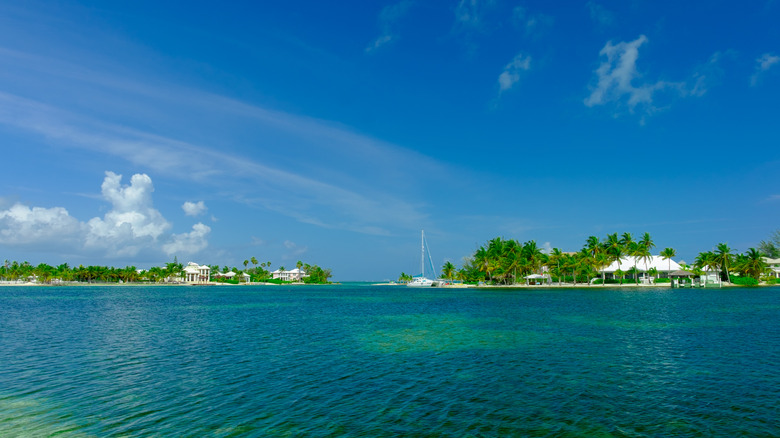Bioluminescent Bay
The waters off Rum Point, on the north coast of Grand Cayman, are a sight to behold in their own right, but at night, they become even more special. In a small area known as Bioluminescent Bay, the water lights up when agitated, a phenomenon caused by tiny marine creatures emitting light. This excursion is bucket-list worthy and is likely to instill childlike wonder in anyone who participates. Cayman Kayaks takes visitors out to the bay under the cover of darkness, departing from Rum Point and weaving along the coast to the bay.
Once there, travelers will notice the magical waters light up when they swish a paddle through the shallows, a marvel that is almost hard to believe. Tours can be done aboard an electric boat as a less physically demanding option. Whatever mode of transport is chosen, guests will enjoy the sparkling water and commentary from guides who can point out the bounty of stars and planets in the night sky.
The Blowholes
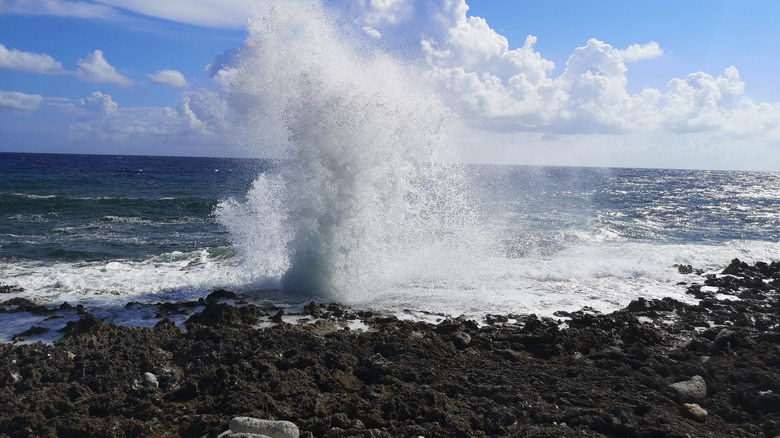
While the water around the Cayman Islands is blissfully calm in many spots, allowing for some sublime swimming and snorkeling, other areas accurately convey the power of the sea. This is especially apparent at the blowholes in the eastern part of Grand Cayman, sights that are both thrilling and terrifying, with unbridled spouts and surges of water leaping into the sky.
There are a few blowholes along here, formed when the strong sea currents roll into the shore and find space inside sea caves before squeezing out through holes in the roof of the cave. The force of the water that shoots up can be overpowering, so visitors are advised not to get too close to these blowholes. The majority of them are located along Seaview Road on the south coast of Grand Cayman, and when the winds and surges are strong, the water from a blowhole can rocket up as high as 20 feet.
Cayman Brac
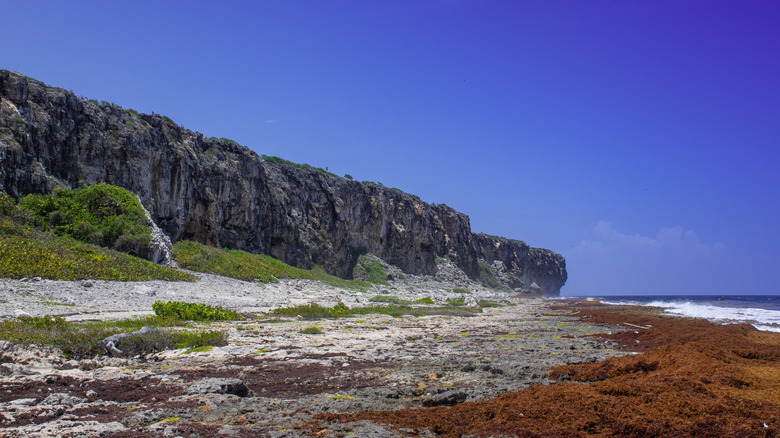
Drew McArthur/Shutterstock
Unlike Grand Cayman and Little Cayman, this island has some noticeable elevation, making it an excellent spot for any sporting activity — specifically rock climbing. Made of limestone, the cliffs sit above gorgeous turquoise waters, adding incredible vistas to the excursion and allowing climbers to take a break to look over beautiful seascapes. The climbing here isn’t only for seasoned pros; travelers new to the sport can acclimate themselves to the vertical discipline with the simple option of a rappel trip.
Operator Rock Iguana takes visitors out onto the cliffs, with choices such as a rappel tour where adventurers can hang above the sea and spy blowholes or a two-day beginner climbing course that covers topics such as tying knots, gear, and a primer on holds and techniques. The most taxing tour is climbing the Point, which involves tackling a 140-foot cliff on the eastern part of the island.
Cayman Spirits Company Distillery

Wine Living: Wine, Spirits & Food with Marc Supsic / YouTube
One of the joys of visiting the Caribbean is just chilling by the sea, maybe under the shade of a beach umbrella or palm tree, sipping an ice-filled, soothing tipple. One of the most popular spirits in the region is rum, and it’s one of the drinks made at the Cayman Spirits Company Distillery, a producer of fiery alcohol-based in Grand Cayman. On a tour of its facility, visitors can see how rum and vodka are made.
Opened in 2013 on the outskirts of the capital, George Town, the outfit is, in fact, the only distillery in the territory. Tours are reasonably priced, costing $15, and last a little over 30 minutes. During one, visitors will saunter around the 5,000-square-foot area, see a 1,200-gallon copper still, a 30-foot tower used for vodka, and the apparatus used to distill rum. Guests will be able to sample some of the company’s products during a tasting session after the tour ends.
Cayman Turtle Centre
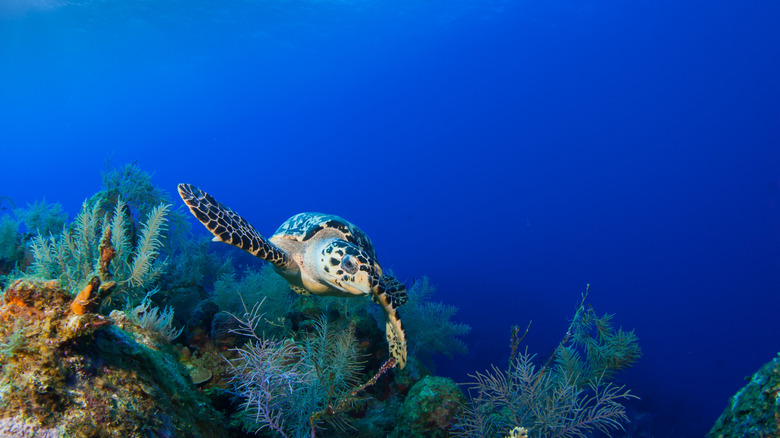
Drew McArthur/Shutterstock
There’s something so heartwarming about seeing a turtle slowly swish its way through the water, gliding along as it uses its front flippers to propel itself. For anyone who is a fan of a turtle — that might just be about everyone — this spot is one place on Grand Cayman not to be missed. Run by the government of the Cayman Islands, the Cayman Turtle Centre features different sections where visitors can learn about and interact with these tranquil sea creatures, which can be found living in the waters around the Cayman Islands.
In the Greens’ Breeding Bay, you can spot turtle eggs (in the right season, of course) and sit in small pools where young turtles swim. In the lagoon area, families can enjoy rides on curling waterslides, lounge inside a large swimming pool, or even snorkel in clear water with juvenile turtles as they get to grips with their nascent existence.
Crystal Caves
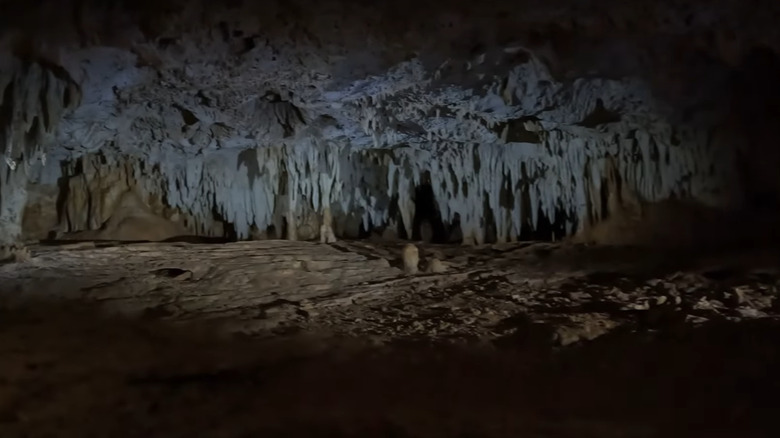
Travel with Mitsugirly / YouTube
Deep in a forest, this cave system has some pretty impressive limestone formations. Trips here aren’t unsupervised wanders but are guided tours, which usually last about 90 minutes, and that venture into three caves as well as around the forest around the formations. The setting for this natural attraction is in the north-central part of Grand Cayman, an area known as North Side. Participants will be able to learn about the processes that create stalactites and stalagmites formed when water interacts with limestone.
Many eons ago, these caves were underwater, and, at a later time, when above ground, were used by pirates to evade captors and the elements (some believe that treasure is hidden here). Guides help visitors discover the wonders of the forest, a place where parrots, strangler balsam trees, and other flora and fauna thrive, and learn about how bat guano was a key fertilizer for local farmland.
Deep Sea Fishing
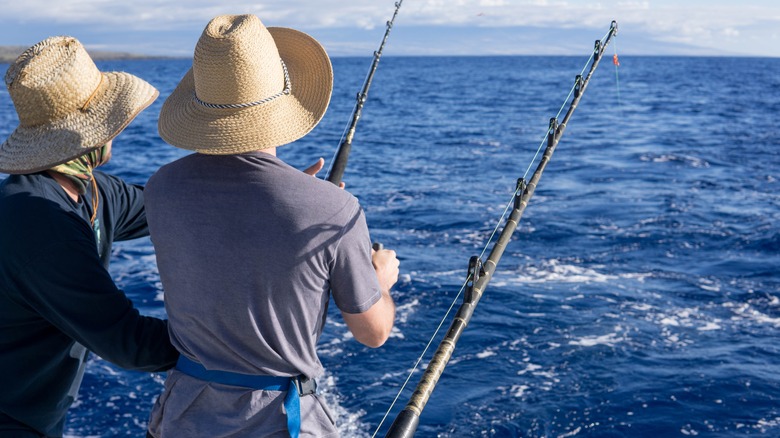
Raissa Martins Nogueira/Shutterstock
Thanks to a sudden drop-off of the seabed close to shore, travelers don’t need to venture far to be able to fish in the depths, allowing them to spend most of their time on the water with a rod and reel at the ready. After boarding a boat at the harbor in Grand Cayman, an angler needs to travel about a quarter of a mile to encounter water that plummets down thousands of feet, and a little bit further out is the Cayman Trench, where the seabed sits 20,000 feet below the water’s surface.
This is a realm teeming with sport fish, and guests on a boat can expect to find tuna, mahi mahi, and blue marlin. Different fish are present depending on the month, but there is always something big to fish, so a visitor will be able to catch something sizable any time of the year. Boat trips leave early in the morning and offer a half-day (approximately four hours) or a full-day adventure.
Horse riding

Mlenny/Getty Images
While the riding schools are aimed more at people wanting to fine-tune their skills on an ongoing basis, they allow visitors to get on horseback or even visit a pony. The Equestrian Center lets newcomers to the sport take beginner lessons, starting with children as young as five years old, where they will learn the basics of riding, with a strong focus on safety. More advanced students can progress to the disciplines of dressage and jumping.
For casual visitors, the Pony Park will be of great appeal. It opens every Saturday morning and is where youngsters can interact with Pebbles, a small horse, Lulu (a donkey), and even a few goats, all accustomed to human contact. Entry to the park even includes a ride on a pony. At the Cayman Riding School, a full roster of lessons and learning pulls in youngsters galore, especially those training for competition.
Kittiwake shipwreck
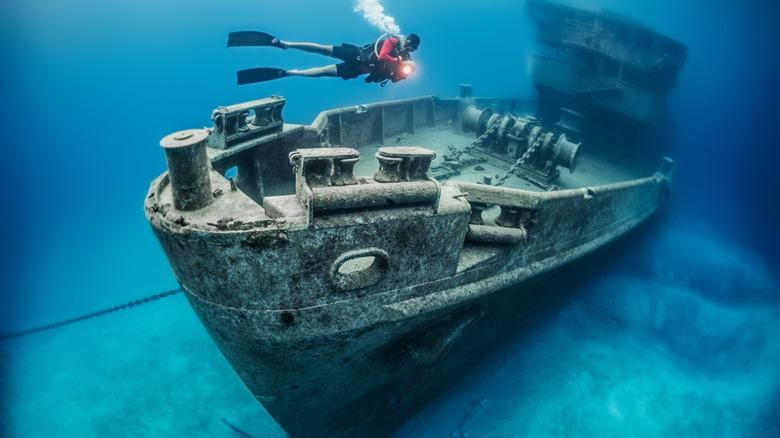
Extreme-photographer/Getty Images
There is lots of excellent diving and snorkeling around the Cayman Islands, thanks largely to the pristine waters found here. One of the prime diving sites by Grand Cayman, also good for snorkelers, the “Kittiwake,” was a former American ship that sank at the beginning of 2011. Keen observers of history might recognize the name of the vessel. It was used by U.S. forces from 1945 to 1994 since it helped recover the Challenger Space Shuttle, a mission that failed when the shuttle exploded shortly after take-off in January 1986.
The “Kittiwake” sits in about 50 feet of water and slowly, over time, has become an artificial reef of sorts, one where sponges, large groupers, and urchins prosper. Thanks to its relatively shallow placement and the clarity of the water here, the wreck can be seen by snorkelers. However, for real exploration, it is divers who will have the best views of the boat’s five decks.
Mastic Reserve
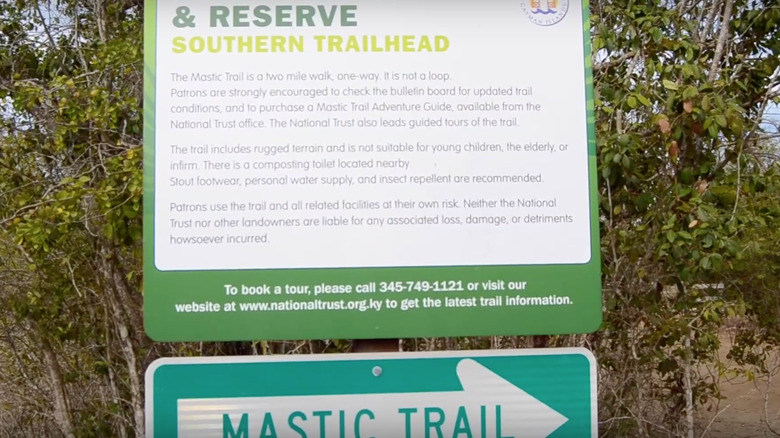
Hylton_Takes / YouTube
First opened in 1992 and home to the largest tract of native forest on Grand Cayman, this reserve is a boon for nature lovers. Perhaps the central core of the reserve is the Mastic Trail, which officially debuted in 1995. Its genesis, however, dates back more than a century, when rocks from beaches and sections of mahogany trees were laid down to help islanders voyage across an area of wetland. The trail grew in importance, but once more roads were built around the island, it became abandoned.
Work started in 1994 to revitalize it, removing new growth and trees that had fallen and blocked the route. Today, the trail winds along more than 2 miles of forest, weaving between mangroves, canyons of palm trees, old agricultural pastures, and past cedar and mastic trees. Visitors here in June will see the annual blooming of the Wild Banana Orchid on the trail (it is the territory’s national flower). The reserve also promises incredible birdwatching opportunities, with the West Indian Woodpecker among the resident species.
Pedro St. James
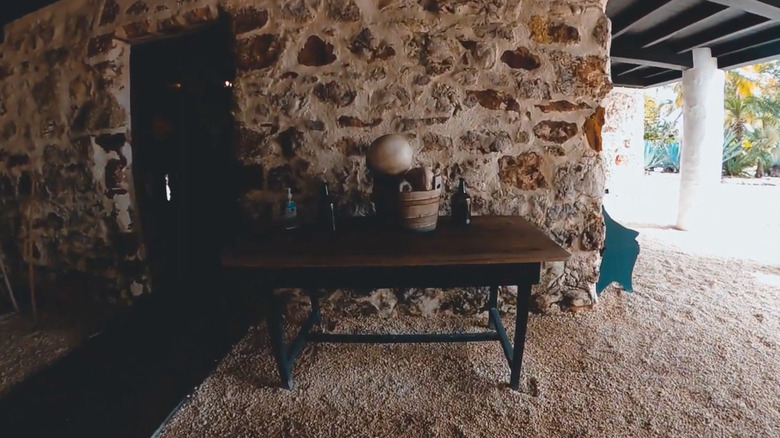
Aringaal / YouTube
This National Historic Site once belonged to a wealthy Englishman and was his home in the 1700s. It was built by slaves who were captured and brought to the island from Jamaica. The Cayman Islands government purchased the house three decades ago, and it set about returning the space to its original splendor, from the interior décor to the period furnishings. Today, this is a fabulous place to take a look into the past, to a time when the island was nothing more than a fishing settlement.
In fact, in the late 1700s, the total population of the Cayman Islands was only about 500 people. The focal point of Pedro St. James is the Great House, rising three stories and notable for its solid stone walls that are more than one foot thick. It was a grand structure, using slate from England for its roof. The building has since been used as a jail, government facility, and even a restaurant, but now its role is as a historical record.
Point of Sand
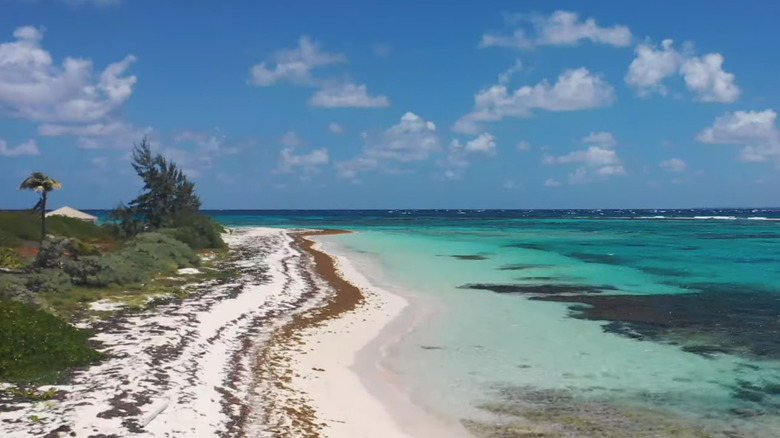
Caribbean Journal / YouTube
For some visitors, the most enjoyable moments in the Cayman Islands are those spent doing very little, soaking up the tranquility or the purity of the environment. When looking for a spot that allows for quiet reflection and one that is memorable for its sheer, simple beauty, it’s hard to beat this small beach. Located on the coast of Little Cayman, Point of Sand is, just as its name suggests, a slip of powdery sand that extends into the clear turquoise seas.
This is the kind of place that beach lovers fantasize about, a curve in the shore that almost feels like it lives at the edge of the world. Beyond the obvious attractive qualities of the location, it is also an excellent place to snorkel, with a reef where fish wander, and swimmers might spot parrotfish, tangs, and stingrays. Large queen conch shells also populate the sand, washed up by the tide.
Queen Elizabeth II Botanic Park
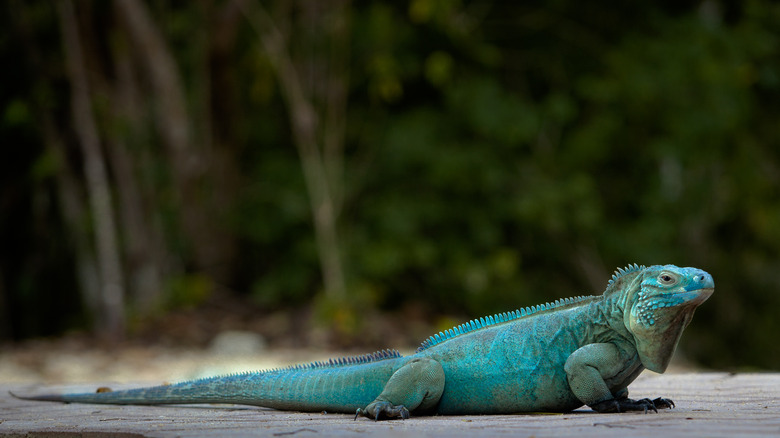
Blue Sky imagery/Shutterstock
Situated on the North Side of Grand Cayman, The Queen Elizabeth II Botanic Park, named after the late British monarch, has much to admire. Activity centers around the lake, 2 acres in size, and where birds and animals tend to congregate. The park is divided into seven zones, including the Floral Garden and a Children’s Garden under construction. One of the highlights is the Orchid Garden, which features 10 of the 28 types of orchids found in the territory, four endemic to the Cayman Islands.
The Grand Cayman Blue Iguana only exists on this island and is an endangered species, which is why the Blue Iguana Conservation Facility, located in the park, is so important — a breeding site that aims to help safeguard the future of this creature. Visitors can see this stunning, scaly reptile at the facility, which sits on the Woodland Trail, and appreciate how the animal, almost extinct 30 years ago, is on its way to recovery.
Rum Point Beach
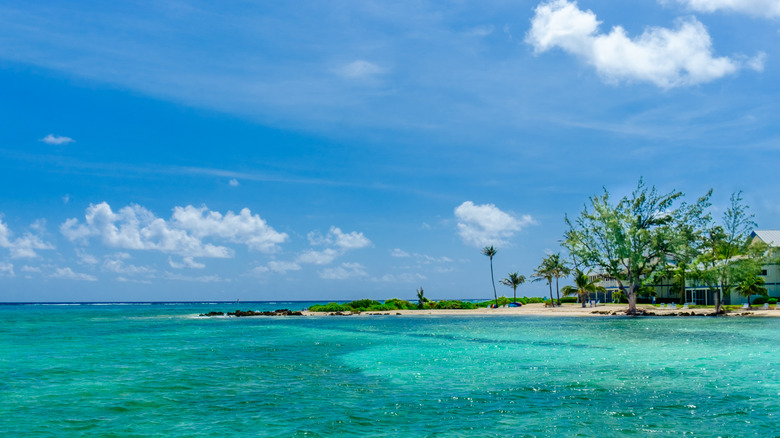
eric laudonien/Shutterstock
The departure area for bioluminescent kayak trips is an ideal spot for relaxation and enjoying the water. Rum Point Beach sits at the end of a peninsula jutting out from the center north of Grand Cayman and has grown in popularity thanks to its comely form, with calm, shallow waters that hypnotize with their dazzling shades of blue and sand, nearly blinding to the eye.
It’s an excellent choice for families looking for a leisurely swim or an easy snorkel, and there are places to unwind, from hammocks by the waterfront to picnic tables where groups can take lunch and marvel at the view. There are also places to eat nearby, and numerous villas are a short walk away. Even for those visitors staying near George Town, the drive here isn’t too taxing — less than an hour by car. For fans of water sports, outfitters offer water toys to take out on the sea.
Seven Mile Beach
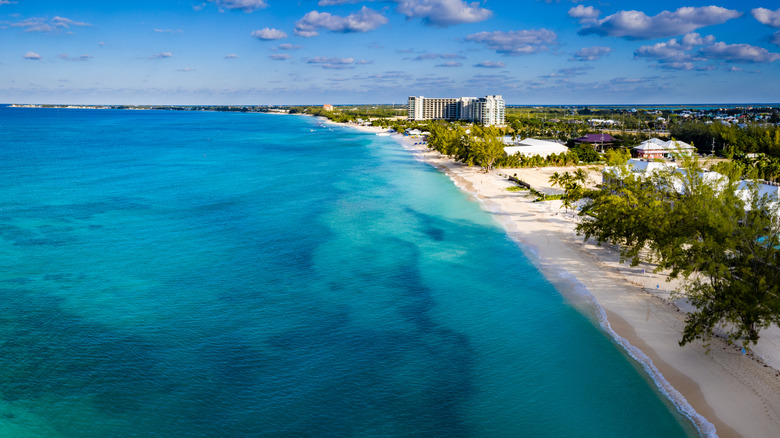
andy morehouse/Shutterstock
If one bit of the Cayman Islands were ever its claim to fame, it would be this stretch of sand. Even in a territory with many outstanding beaches, this one is as glorious as its name suggests. On the west of Grand Cayman, and thus protected from the rolling, open surges of the east, the beach does seem to go on forever. It is lined with plenty of businesses and some of the plushest properties in the Cayman Islands, and travelers can explore its grandeur during a beach stroll along the entire stretch.
Water sports are on offer here, and parasailing canopies are often seen billowing offshore, but the beach is the main attraction. That said, snorkelers will enjoy access to some fantastic sites, such as Cemetery Reef. Located just off the Cemetery Beach section of Seven Mile Beach, the snorkeling lies a couple hundred feet offshore and is immensely rewarding.
Smith’s Barcadere
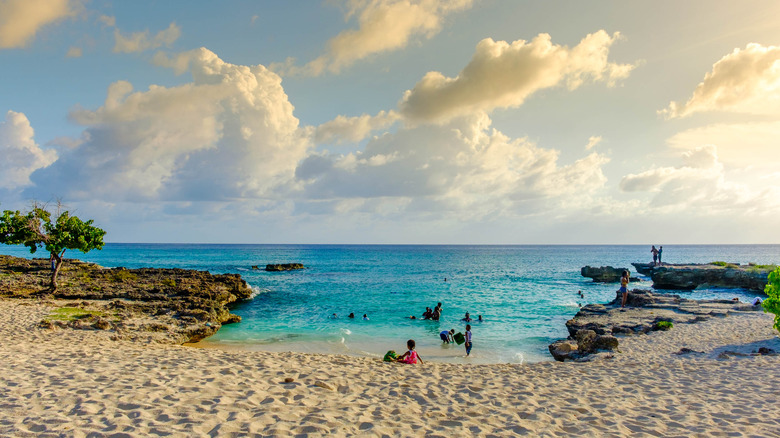
eric laudonien/Shutterstock
There is also some fine snorkeling at this natural destination on Grand Cayman, where limestone outcroppings help to keep the water calm. It sits south of George Town and not too far from the cruise terminal, so it can get a little crowded if a large ship is in town. Some guides might list the location as Smith Cove, but rest assured that this is the same place, near South Sound Public Beach.
Whatever name it goes by, the experience for visitors will be the same — inviting white sand, clear water, and bridges of limestone that extend out into the sea, backed by a thicket of shrubs and trees that add a little variety of color to the surroundings. It’s an excellent choice for families, with calm water perfect for smaller kids, while the more adventurous can kick out a little further into the sea to experience sudden drops in the sea floor and the chance to plunge into the depths.
Starfish Point
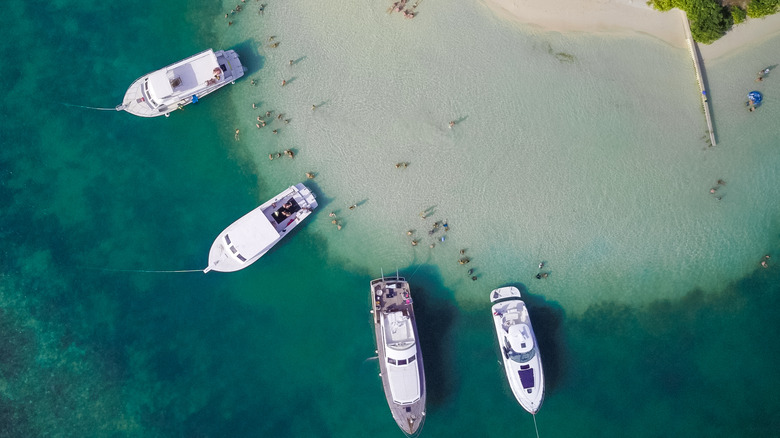
jimcatlinphotography.com/Shutterstock
Out on a finger of land south of Rum Point, this point is prominent for what lies in the waters just offshore. Sure, it is a beautiful beach, with water on many sides and clear water that will come as no surprise to anyone who has spent time on the islands, but what really sends travelers into raptures of delight are the scores of starfish sitting on the sea bed, or sometimes washed up on the shore. This is a popular spot, for sure, thanks to the placid conditions and the fact that even young kids can wade into the shallow water without fear of being swept away.
The starfish are Red Cushion sea stars; technically, they are not fish. With a life span of more than three decades, these stars vary in color, morphing from greens and browns when they are juvenile to oranges and reds when they age. Visitors often come here to pick up the stars and have them wrap their limbs around the holder’s hand; if you do, ensure you never take the star out of the water; it can be fatal for the life form.
Stingray City
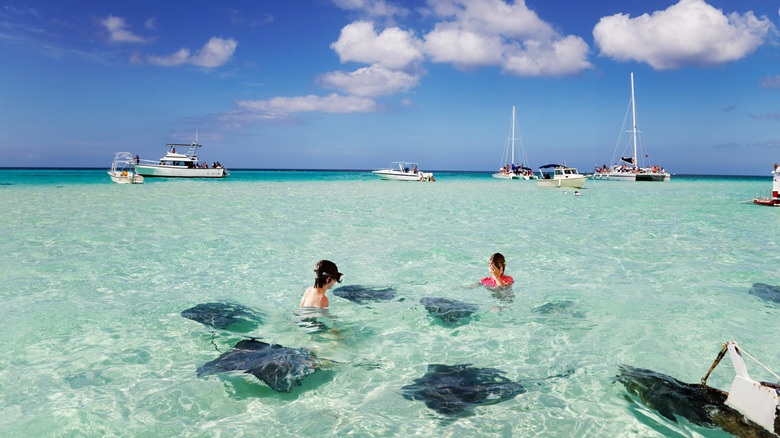
Jsnover/Getty Images
This is a very touristy site; some might say it is overly commercial, but it’s still worth seeing. This is where placid stingrays congregate around waders, swimmers, snorkelers, and divers, and if you’ve ever seen an Instagram post of someone trying to kiss a stingray while lounging in chest-high water, there’s a good chance that the shot was taken here. Stingray City can be, during popular times, like a circus, with tons of boats and scores of travelers in the water desperate to get a little stingray affection.
But time the visit smartly — preferably when there aren’t any cruise ships in port, so ideally over the weekend — and you will have a much more enjoyable adventure. The stingrays are accustomed to humans and will come close by, and since the location is some distance off the shore of Grand Cayman, by sand bars, this place can only be visited as part of a tour (we’ll assume you won’t have your own boat). The experience is thrilling, a little surreal, and one that will promise some unforgettable photos.

